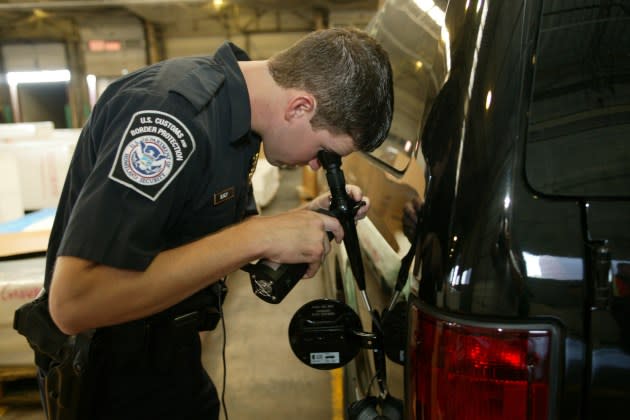Uyghur Forced Labor Prevention Act Sees Update, Loopholes Remain

It would be near impossible to trace an industrial supply chain without deep debts to forced labor, say activists and lawmakers. And fashion is unfortunately deemed “high risk” for forced labor, per the U.S. Customs and Border Protection.
Tuesday, the Forced Labor Enforcement Task Force, chaired by the Department of Homeland Security, published an update to the Uyghur Forced Labor Prevention Act (UFLPA). The strategy looks to prevent the import of goods mined, produced or manufactured with forced labor in the People’s Republic of China.
More from WWD
Green People: She Exposed Toxic Fashion in 'To Dye For,' Found an Audience on TikTok
'Hibernation,' Brutalism, Climate Key at New York Textile Trade Shows
The task force underscored enforcement of the UFLPA’s rebuttable presumption, which went into effect June 21, 2022. This prohibits goods made in Xinjiang, or by entities identified on the UFLPA Entity List (essentially a banned import list for manufacture in part or whole with forced labor), unless the importer can provide “clear and convincing” evidence, per the CBP, against forced labor. Its suggestions, in part, include establishing a due diligence program, supply chain tracing program and supply chain management measures, along with having the nimbleness to answer on behalf of their imports.
The only problem is fashion is still catching up to lawmakers’ demands. According to Fashion Revolution’s 2023 transparency index, 52 percent of brands publish a list of their tier 1 facilities. The Open Data Standard for the Apparel Sector is one real-time collaborative effort to unify reporting standards, with 37 percent of brands reporting their compliance but far fewer, or 25 percent, publishing their lists on the Open Supply Hub. Indicators that may be helpful in disproving forced labor, like transparency on weekly take-home wage (2 percent disclose), number of migrant or contract workers (16 percent disclose) or trade union representation (4 percent disclose), are little reported upon.
In the first year of the UFLPA’s enforcement, CBP reviewed 4,651 shipments (of which 872 were denied entry and 1,849 were cleared) valued at more than $1.6 million. (Data is not provided for remaining shipments, though they are understood to be under review).
New entries added as of Tuesday to the UFLPA Entity List include Xinjiang Zhongtai Chemical Co. Ltd.; Ninestar Corporation, including eight of its Zhuhai-based subsidiaries; Camel Group Co. Ltd., and Chenguang Biotech Group Co. Ltd., including one subsidiary. Already, cotton, garment and textile makers make up a significant portion of the list.
“The Forced Labor Enforcement Task Force represents a whole-of-government effort to implement the Uyghur Forced Labor Prevention Act,” U.S. trade representative Katherine Tai said in a press statement. “Today’s additions demonstrate the United States’ unwavering commitment to eliminating forced labor, including by ensuring that goods made by forced labor are not imported into our country. The Office of the United States Trade Representative will continue to work with our interagency task force partners to implement this legislation and eliminate forced labor from our supply chains.”
The task force includes seven member agencies, among them the U.S. Trade Representative and Departments of Labor and Commerce.
Certain gaps remain at the border, however. The “de minimis” loophole in the Tariff Act of 1930, for one, obscures shipments valued under $800 from CBP scrutiny, meaning those with values below that, where fast fashion often falls, are not subject to duty. Following pressure from lawmakers, fast fashion retailer Shein called for revaluation of the law to “create a level playing field for all retailers,” in a letter dated last week to the American Apparel and Footwear Association. U.S. lawmakers previously accused both Shein and Temu of exploiting the loophole and paying next to nothing in taxes. Shein is also in hot water for a RICO lawsuit, accused of stealing artist designs, as it explores a potential IPO.
Best of WWD

